Gallery: The Springtime of the Renaissance | reviews, news & interviews
Gallery: The Springtime of the Renaissance
Gallery: The Springtime of the Renaissance
Browse a selection of images from the Palazzo Strozzi exhibition

The images in this gallery illustrate some of the links and juxtapositions made in The Springtime of the Renaissance. Classical statues which influenced Florentine artists, works reunited for the first time in centuries, sculptural forms reproduced in two-dimensional paintings (see main image) - you can find all of them below. The 20 images are arranged in 10 pairs, each of which represents a theme of the exhibition.
Click on the images to enlarge, and read the full article about the exhibition here.
Row 1: The Dawn of the Renaissance
The first-century BC Boy with Thorn in marble (Galleria Estense, Modena) was the direct inspiration for the figure of the shepherd in the corner of Brunelleschi's The Sacrifice of Isaac, 1401 (Museo Nazionale del Bargello, Florence), his bronze panel for the competition for the bronze doors of the Baptistery.
Row 2: Orsanmichele
The former granary in the heart of Florence became in the early Quattrocento an open-air exhibition space for a revolution in sculpture. Two of the sculptures are reunited here for the first time since 1460: Ghiberti's St Matthew, 1419–22 (Chiesa e Museo di Orsanmichele), and Donatello's St Louis of Toulouse, 1422–5 (Museo dell'Opera di Santa Croce).
Row 3: Civic and Christian Romanitas
The exhibition reunites pieces of Michelozzo's Funerary Monument of Bartolomeo Aragazzi in the Episcopal Palace in Montepulciano. Created by Michelozzo and his workshop in 1427-38, it was broken up in the 17th century. His marble Two Adoring Angels (Victoria and Albert Museum) are exhibited alongside the only surviving fragment of the monument's gilt bronze Inscription (Episcopal Palace, Montepulciano).
Row 4: "Spirits", both Sacred and Profane
The classical Roman marble Putto with a Goose, mid-1st century AD (Musei Vaticani), was a type of statue known to Florentines and may have been an influence on Donatello for his bronze Spiritelli (Spirits), 1439, from the cathedral's hugely popular Choir Loft (Musée Jacquemart-André, Institut de Paris)
Row 5: The Rebirth of the Condottieri
Donatello was almost single-handledly responsible for rekindling the tradition of the equestrian statue. Filarete's small bronze copy of an iconic Roman statue Marcus Aurelius, c. 1440–5 (Skulpturensammlung, Staatliche Kunstsammlungen, Dresden) cites its roots in classical antiquity. Donatello's Gattamelata in Padua prompted Alfonso V of Aragon to commission an even grander monument to himself. The immense bronze Carafa Protome, c. 1455, is all that Donatello managed to complete(Museo Archeologico Nazionale, Naples).
Row 6: Sculpture in Paint
The concept of sculptural mass and architectural depth migrated across onto the walls of Florence. Masaccio's St. Paul, 1426 (Museo Nazionale di San Matteo, Pisa), was painted on wood. Andrea del Castagno's Cumaean Sybil, 1448–9 (Galleria degli Uffizi), is part of a series of monumental fresco portraits for the loggia of a villa outside Florence.
Row 7: History in Perspective
Though taking their cue from the crowded bas-reliefs of Roman sarcophagi, Florentine sculptures added an extra dimension with the discovery of the vanishing point. Compare Donatello's early St George and the Dragon, c. 1417 (Museo Nazionale del Bargello), with Desiderio da Settignano's St Jerome in the Desert, c. 1461 (National Gallery of Art, Washington).
Row 8: The Spread of Beauty
The second half of the 15th century found commissions migrating from the public sphere to the private, especially when Luca della Robbia created a way of producing affordable faux-marble by glazing terracotta. His Madonna and Child (Genoa Madonna), 1445–50 (Detroit Institute of Arts), is shown alongside a comparable painting on wood by Filippo Lippi, Madonna and Child, c.1460 (Palazzo Medici Riccardi, Provincia di Firenze / Beni Storico-Artistici).
Row 9: Beauty and Charity
A great deal of religious art was created for buildings with a charitable purpose, such as the hospital seen in Bicci di Lorenzo's fresco of Pope Martin V Consecrates the Church of Sant’Egidio in 1420, c.1424 (Ospedale di Santa Maria Nuova, Patrimonio Storico Artistico dell'Azienda Sanitaria di Firenze). Illustrated over the left door is (almost certainly) Dello Delli's painted terracotta of Christ Showing the Wound in His Side, c.1420–4. The original (Victoria & Albert Museum) is exhibited alongside it for the first time.
Row 10: From City to Palace, the New Patrons of the Arts
The spread of private wealth in republican Florence eventually found patrons celebrating the individual. Bas-relief of classical figures such as Mino da Fiesole's Julius Caesar, c. 1455–60 (Cleveland Museum of Art), proliferated alongside the new taste for portrait busts such as Desiderio da Settignano's Marietta Strozzi, c.1464 (Bode-Museum, Staatliche Museen zu Berlin).
- The Springtime of the Renaissance: Sculpture and the Arts in Florence, 1400-1600 at the Palazzo Strozzi until 18 August, then at Musée du Louvre from 26 September to 6 January 2014
Explore topics
Share this article
The future of Arts Journalism
You can stop theartsdesk.com closing!
We urgently need financing to survive. Our fundraising drive has thus far raised £49,000 but we need to reach £100,000 or we will be forced to close. Please contribute here: https://gofund.me/c3f6033d
And if you can forward this information to anyone who might assist, we’d be grateful.

Subscribe to theartsdesk.com
Thank you for continuing to read our work on theartsdesk.com. For unlimited access to every article in its entirety, including our archive of more than 15,000 pieces, we're asking for £5 per month or £40 per year. We feel it's a very good deal, and hope you do too.
To take a subscription now simply click here.
And if you're looking for that extra gift for a friend or family member, why not treat them to a theartsdesk.com gift subscription?
more Visual arts
 'We are bowled over!' Thank you for your messages of love and support
Much-appreciated words of commendation from readers and the cultural community
'We are bowled over!' Thank you for your messages of love and support
Much-appreciated words of commendation from readers and the cultural community
 Photo Oxford 2025 review - photography all over the town
At last, a UK festival that takes photography seriously
Photo Oxford 2025 review - photography all over the town
At last, a UK festival that takes photography seriously
![SEX MONEY RACE RELIGION [2016] by Gilbert and George. Installation shot of Gilbert & George 21ST CENTURY PICTURES Hayward Gallery](https://theartsdesk.com/sites/default/files/styles/thumbnail/public/mastimages/Gilbert%20%26%20George_%2021ST%20CENTURY%20PICTURES.%20SEX%20MONEY%20RACE%20RELIGION%20%5B2016%5D.%20Photo_%20Mark%20Blower.%20Courtesy%20of%20the%20Gilbert%20%26%20George%20and%20the%20Hayward%20Gallery._0.jpg?itok=7tVsLyR-) Gilbert & George, 21st Century Pictures, Hayward Gallery review - brash, bright and not so beautiful
The couple's coloured photomontages shout louder than ever, causing sensory overload
Gilbert & George, 21st Century Pictures, Hayward Gallery review - brash, bright and not so beautiful
The couple's coloured photomontages shout louder than ever, causing sensory overload
 Lee Miller, Tate Britain review - an extraordinary career that remains an enigma
Fashion photographer, artist or war reporter; will the real Lee Miller please step forward?
Lee Miller, Tate Britain review - an extraordinary career that remains an enigma
Fashion photographer, artist or war reporter; will the real Lee Miller please step forward?
 Kerry James Marshall: The Histories, Royal Academy review - a triumphant celebration of blackness
Room after room of glorious paintings
Kerry James Marshall: The Histories, Royal Academy review - a triumphant celebration of blackness
Room after room of glorious paintings
 Folkestone Triennial 2025 - landscape, seascape, art lovers' escape
Locally rooted festival brings home many but not all global concerns
Folkestone Triennial 2025 - landscape, seascape, art lovers' escape
Locally rooted festival brings home many but not all global concerns
 Sir Brian Clarke (1953-2025) - a personal tribute
Remembering an artist with a gift for the transcendent
Sir Brian Clarke (1953-2025) - a personal tribute
Remembering an artist with a gift for the transcendent
 Emily Kam Kngwarray, Tate Modern review - glimpses of another world
Pictures that are an affirmation of belonging
Emily Kam Kngwarray, Tate Modern review - glimpses of another world
Pictures that are an affirmation of belonging
 Kiefer / Van Gogh, Royal Academy review - a pairing of opposites
Small scale intensity meets large scale melodrama
Kiefer / Van Gogh, Royal Academy review - a pairing of opposites
Small scale intensity meets large scale melodrama
 Jenny Saville: The Anatomy of Painting, National Portrait Gallery review - a protégé losing her way
A brilliant painter in search of a worthwhile subject
Jenny Saville: The Anatomy of Painting, National Portrait Gallery review - a protégé losing her way
A brilliant painter in search of a worthwhile subject
 Abstract Erotic, Courtauld Gallery review - sculpture that is sensuous, funny and subversive
Testing the boundaries of good taste, and winning
Abstract Erotic, Courtauld Gallery review - sculpture that is sensuous, funny and subversive
Testing the boundaries of good taste, and winning
 Edward Burra, Tate Britain review - watercolour made mainstream
Social satire with a nasty bite
Edward Burra, Tate Britain review - watercolour made mainstream
Social satire with a nasty bite







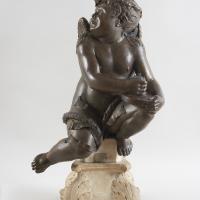


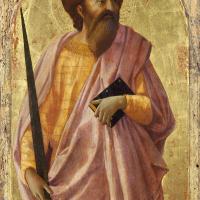

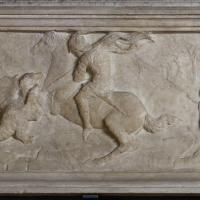
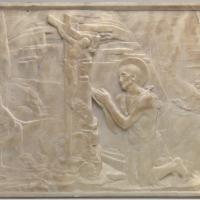
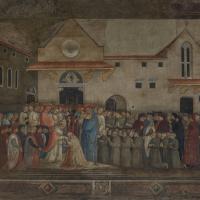
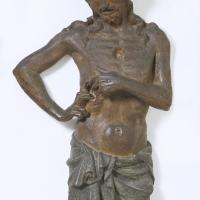

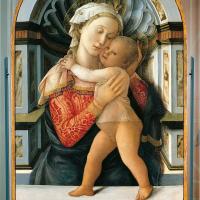

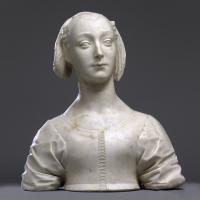
Add comment